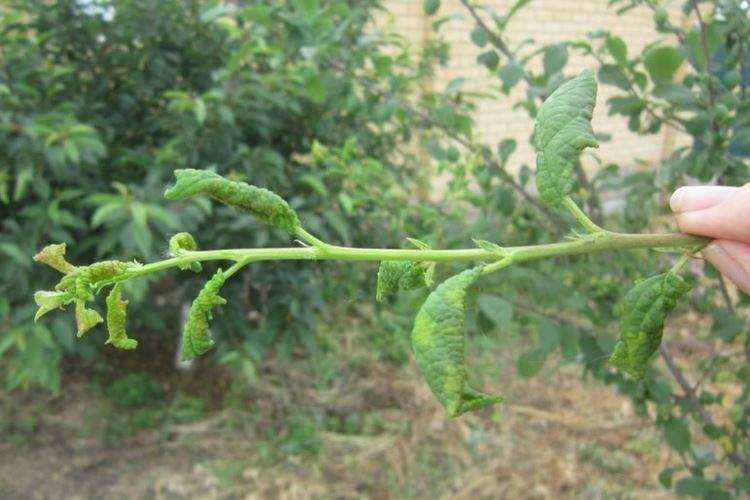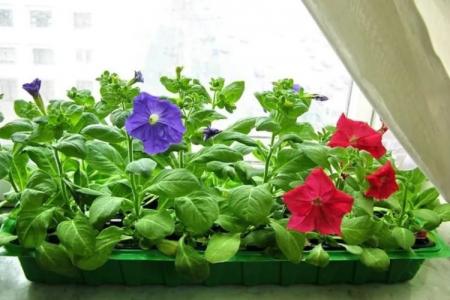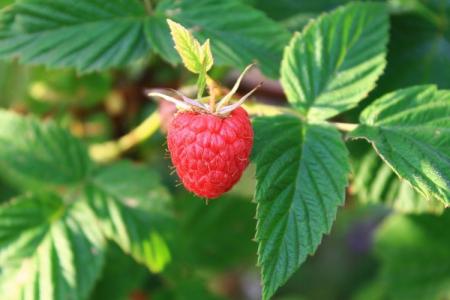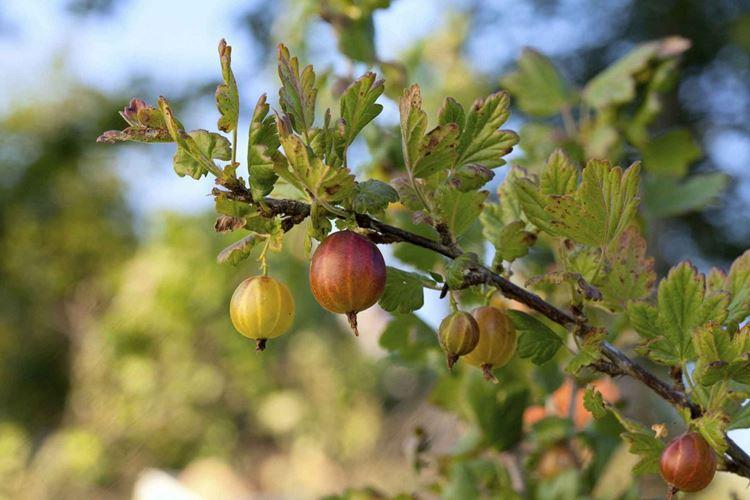
The healing properties of gooseberries were known in Russia. Although the berry was called differently then, it was already used to treat inflammation, anemia and improve the intestines. Also, gooseberries were actively used in cooking, and even medieval recipes for fried goose sauce have been preserved. But even such a valuable plant can hurt on its own, and the first thing diseases appear on the leaves!
Bumps and bumps on the leaves
In addition to spots on the leaves of the gooseberry, all kinds of growths can appear. There are many reasons - from trivial stress to diseases or pests.
- Small tubercles resembling warts appear when the gooseberry is affected by anthracnose. They change color to brown, acquire a bizarre shape and seem to shine;
- Aphids, which are very difficult to notice in the early stages, settle on the back of the leaf plates and lay their eggs. In this case, the leaves may become covered with small tubercles;
- With advanced stages of bacterial cancer, tumors and ulcers appear on all parts of the gooseberry.
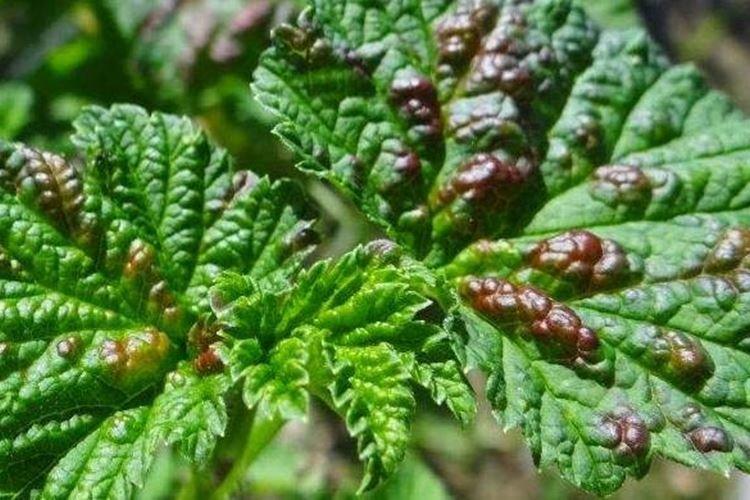
Leaves turn yellow and dry
This is the most common problem that all gardeners face sooner or later. If gooseberry leaves turn yellow at the end of the season, this is a completely natural process. But in the midst of spring or summer, such symptoms indicate more serious diseases!
- Yellow dry spots appear due to sunburn on extremely hot days. Watering and any spraying should be done early in the morning or in the evening;
- When the gooseberry is too hot and lacks moisture, the leaves slowly begin to turn yellow and dry. Adjust watering based on the temperature outside the window;
- Chaotic yellow streaks appear when a viral mosaic is affected. Further, the problem will only progress, because the mosaic is not treated;
- The leaves dry with the branches if a glass case is hidden in the bark;
- An oversupply of fertilizers is more dangerous than a lack of them. If the feeding schedule is violated or improperly applied, you can burn the root system - and the gooseberries will begin to turn yellow and dry;
- Verticillary wilting is a fungus due to which the gooseberry withers and withers. It is difficult to diagnose it in time, because it seems that the problem is in the wrong care.
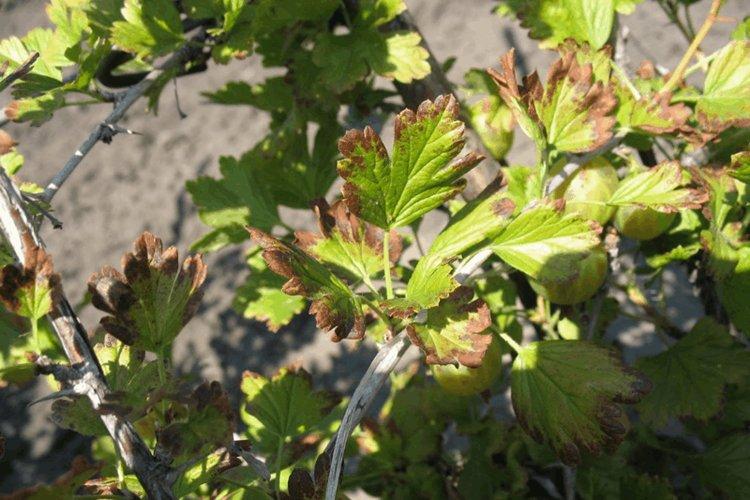
Brown spots on gooseberry leaves
Most often, spots of all shades of red, red and brown appear when the gooseberry is affected by a fungus. Although there are a lot of fungal diseases, they differ mainly only in the pathogen. And the principles of treatment and prevention remain the same - fungicides are needed!
- Dirty yellow-brown stains take on when they start to rot. But this is easy to recognize, because then the leaves seem to swell and soften;
- Brown spots with white dots in the middle are white spot or septoria. Because of it, gooseberries can lose leaves and even the entire future crop;
- If the spots are orange and appear to be slightly puffy, this is goblet-type rust. Gooseberries suffer especially from it, near which sedge grows;
- Columnar rust proceeds in almost the same way, but small yellowish growths form on the back of the stains;
- With a lack of iron and boron, gooseberry leaves acquire a reddish tint;
- Phytophthora is capable of infecting the root systems of almost any garden and vegetable garden crops. In this case, the leaves turn brown completely from the base, and from bottom to top;
- With Alternaria, the spots acquire a gray-brown tint and look velvety.
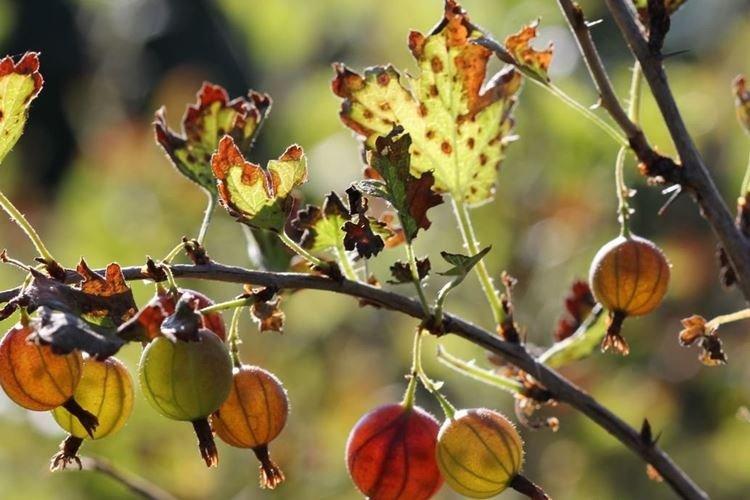
Holes on gooseberry leaves
The leaves of berry bushes readily eat numerous pests. Therefore, most often the scattering of small holes on the plates points exactly to them.
- The caterpillars eat away the leaves along the veins.And it doesn't matter if it is a sawfly or a moth - the result will be the same;
- Gall midges eat away the green parts of leaves and shoots, gradually destroying their structure as a whole;
- The gluttonous leaf beetle prefers fruit crops, but does not disdain berry bushes;
- If there is a strawberry or raspberry plantation near the gooseberry, weevils can spill from it.
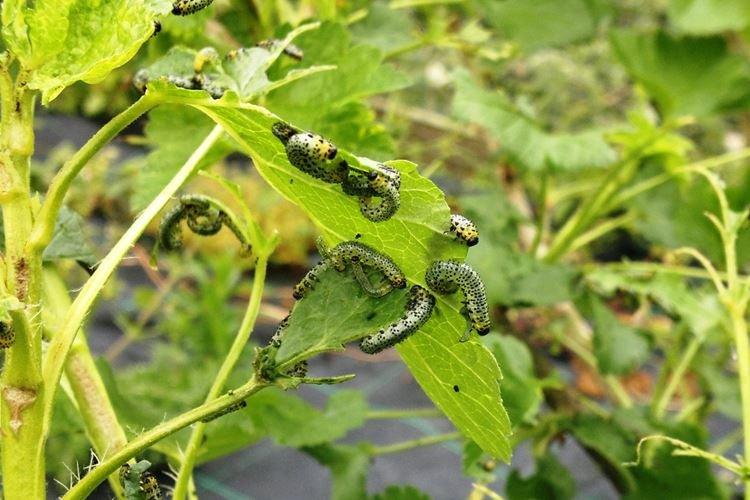
Gooseberry leaves turn black
When the gooseberry leaves become so dark that they already seem almost black - most likely, the situation has reached its peak. These can be severe bacterial lesions, necrosis, or even cancer.
- Due to a bacterial burn, not only the leaves turn black, but also the buds, buds, young shoots;
- When damaged by black rot, dark spots appear on the leaves of the gooseberry, which gradually turn black;
- Black spot has a similar symptomatology, but it begins with a scattering of small black dots;
- Black sooty plaque remains when affected by the fungus of the same name. It is often brought with them by sucking pests, and in particular by aphids.
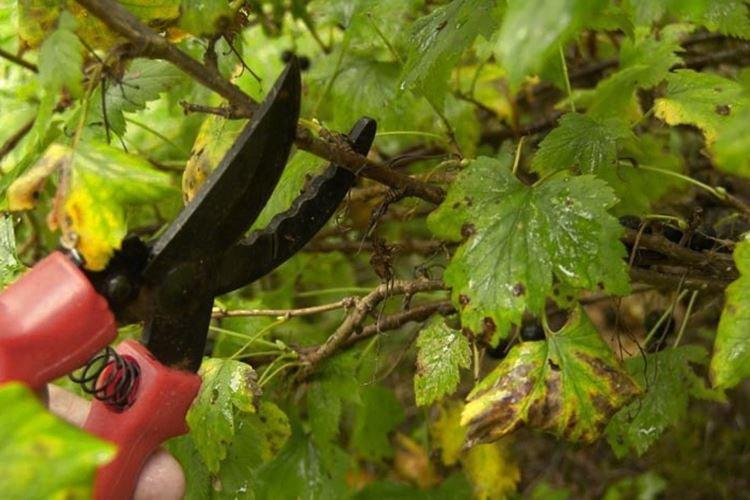
White bloom on gooseberry leaves
There are two main reasons for white bloom on the leaves - it can be a thin web or spores. This means that the gooseberry was struck by pests or a fungus, respectively.
- Spider mites are the main source of thin whitish cobwebs on leaves and shoots. While there are very few insects, it is difficult to notice them, but in the future the gooseberries will be occupied by small black bugs;
- The web can be left by moth caterpillars, but they most often eat fruits, not leaves;
- A uniform and as if velvety pale coating on the leaves - this is the initial stage of powdery mildew. As the fungus progresses, it becomes more and more and it darkens;
- Another fungus with very similar manifestations is spheroteka, which is also called American powdery mildew. The methods of struggle remain the same.

Pale and light leaves
Gooseberry leaves fade and discolor due to improper care. But sometimes there are more serious reasons, so it is important to diagnose the problem in time!
- Gooseberries grow weak and sickly, with the same sluggish faded leaves if the place does not suit it. For example, groundwater is too high;
- Lack of sunlight is the most common cause of leaf discoloration of any crop;
- The deficiency of useful micronutrients is also a serious problem. In addition to regular feeding, do not forget to remove the weeds around so that they do not pull the food off to themselves;
- Gooseberries will not be able to fully open if the root collar is not deepened enough. In addition to pale weak leaves, there will be the same thin and frail shoots;
- Gooseberry leaves barely open and look painful when affected by a kidney mite. It nests in the kidneys and drinks all the juices, which makes them seem misshapen and too large.
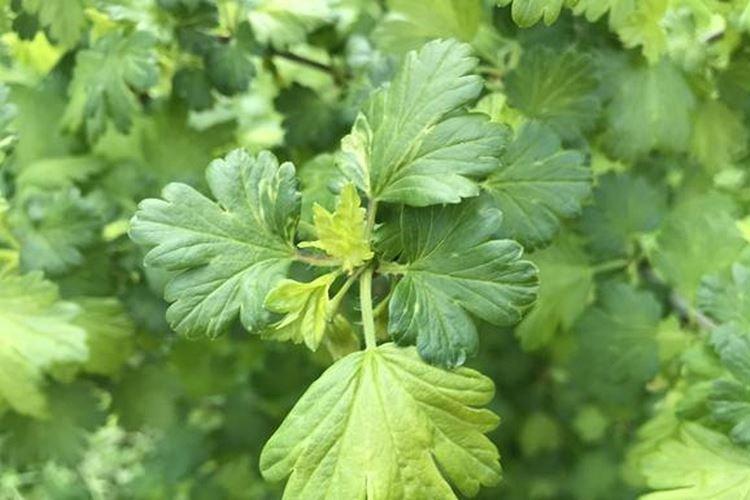
Gooseberry leaves curl
If the leaves have already begun to curl and deform, it's time to sound the alarm. Indeed, in the worst case, the gooseberry can infect an incurable virus, and then at least the rest of the plantings must be saved!
- Leaves curl up into tubes if leaf rollers pupate in them. This rarely happens with gooseberries, but keep in mind anyway;
- The shoot aphid drinks all the juices from the plant to such an extent that the leaves begin to curl, gather in lumps and deform in every possible way;
- Without regular sanitary pruning, the bush thickens strongly, which is why the leaves inside do not have enough light, air, useful elements and vitality in general. They curl, wither and wither;
- Sometimes the deformation of the leaves is caused by a lack of trace elements, but it is very difficult to establish what exactly is missing. We recommend complex feeding;
- The curly virus is not very common in gooseberries, but it should be borne in mind. In this case, all parts of the plant are deformed in a strange way.
